Menus

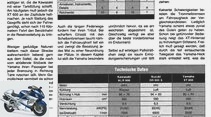

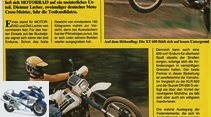
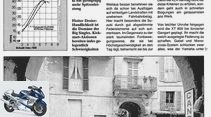
16 photos
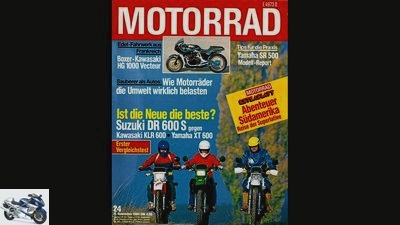
1/16
At the time, MOTORRAD 24/1984 ran the headline: The brand new Suzuki DR 600 S is also based on the displacement limit of 600 cubic centimeters that is common for single-cylinder enduros. A comparison clarifies whether the new one immediately reaches the level of the tried and tested KLR 600 from Kawasaki and the Yamaha XT 600.
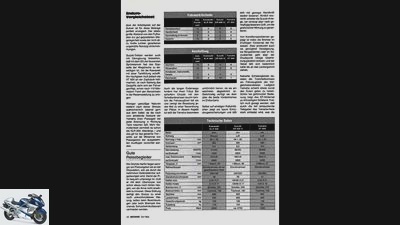
2/16
Scan from MOTORRAD 24/1984.
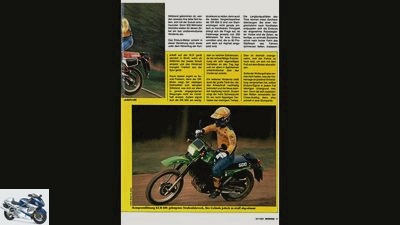
3/16
Scan from MOTORRAD 24/1984.
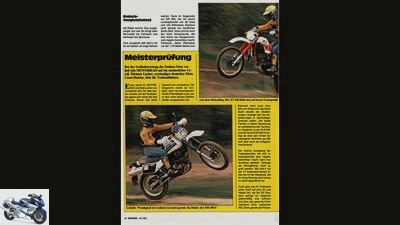
4/16
Scan from MOTORRAD 24/1984.
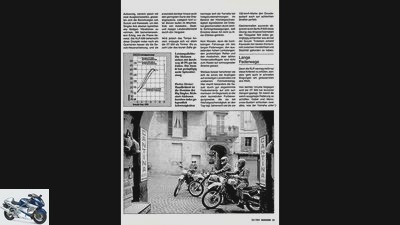
5/16
Scan from MOTORRAD 24/1984.
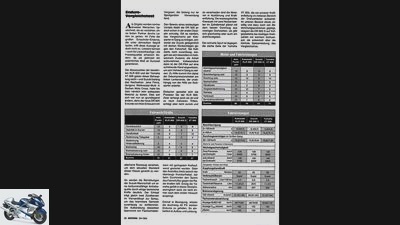
6/16
From here you can see the scans of the article at that time. If the quality is still too bad for you even after enlargement (magnifying glass symbol at the top right), you can purchase the entire article as a PDF in the e-kiosk.
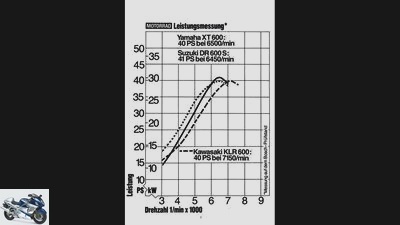
7/16
The engines stand well in the forage with a consistent 40 hp. The Suzuki has slightly more top performance.
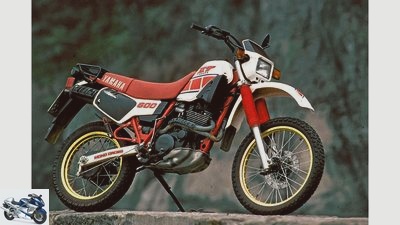
8/16
Yamaha XT 600.

9/16
Suzuki DR 600 S..
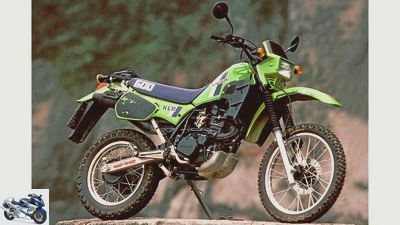
10/16
Kawasaki KLR 600.

11/16
Threesome: Handiness is the domain of the big singles. Kickstart actions occasionally cause difficulties.

12/16
Flying high: The XT 600 feels right at home on loose ground.
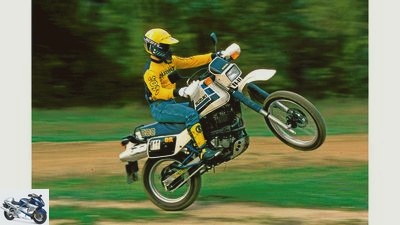
13/16
Goliath: Maneuverability off-road is not exactly the strength of the DR 600 S..
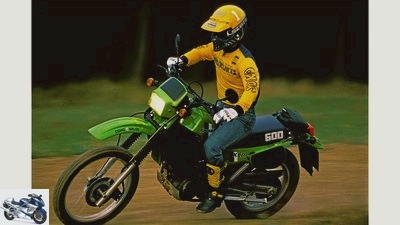
14/16
Compromise solution KLR 600: successful road chassis, but too tightly tuned for the terrain.
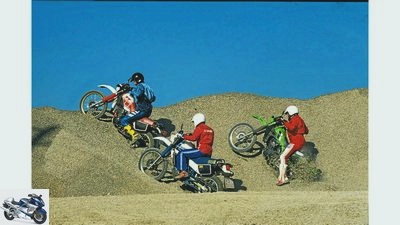
15/16
In the following we show the pictures shown at the time with original captions.

16/16
Scan from MOTORRAD 24/1984.
Suzuki DR 600 S, Kawasaki KLR 600 and Yamaha XT 600 in the test
Enduro comparison test from 1984
Content of
The then brand new Suzuki DR 600 S was also based on the limit of 600 cm³ that is usual for single-cylinder enduros. A comparison with the tried and tested competitors, the Kawasaki KLR 600 and the Yamaha XT 600.
I.In the comparison test in MOTORRAD 24/1984, the new Suzuki DR 600 S faced established competition for the first time. You can find the article scanned in the picture gallery, but you can also purchase and download it as a PDF in the e-kiosk.
Buy complete article
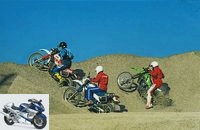
Suzuki DR 600 S, Kawasaki KLR 600 and Yamaha XT 600 in the test
Enduro comparison test from 1984
The test candidates from back then from today’s perspective
archive
Late autumn 1985: Soldier H. taking the last souvenir photo with the Kawasaki. The thigh brush has long been a thing of the past, many wonderful memories have remained.
A Yamaha XT 500 has long been a cult, but not the 600 enduro bikes of the 80s. It is high time we returned to these once popular all-rounders the attention they deserve. Otherwise it will be too late at some point.
Admittedly, I was a little unsure at first whether the reprint of the enduro comparison was a little daring. But after a brief (re) reflection and a long search in the private archive, the doubts were gone. In doing so, I not only rediscovered the photo of my former Kawasaki KLR 600 with the purchase invoice and original brochure, but also the memory of this very special feeling that these studded bikes once gave me – and countless enduro fans -. With their more options, they easily compensated for the less power, even on trips with their buddies and their four-cylinder engines, which are often twice as powerful.
The fact that I hardly savored the versatility of an enduro, because despite all the urge for freedom, exploring new paths off the beaten track wasn’t really my thing, didn’t detract from the fun on the road. Because with over 40 hp and front disc brakes, the relatively lightweight 600cc Enduros mutated into big bike fright on winding bumpy roads. I can still hear the hard metallic impact of my KLR 600, especially at low speeds, as well as the dull thud of an XT 600 without the silencer insert.
bilski-fotografie.de
Uli Holzwarth, Senior Editor MOTORRAD Classic, likes the all-round enduros of the 80s.
I found the Suzuki quite sympathetic because of the large tank, but due to the lack of a rev counter, it came across as an economy model. In stark contrast to the Kawasaki, which, with its water cooling, bolted-on light metal rear and aluminum swingarm including eccentric chain tensioners, offered the most motorcycle for the money. In retrospect, I also noticed that not everything that gleamed in the prospectus was gold. But the sale of the Kawasaki, which was forced by the basic military service, saved me from being confronted with high oil consumption or skipped timing chains far too early.
Maybe the reason why I’ve been flirting with a KLR 600 for a long time. Well-preserved specimens in their original condition are rarer today than a blue Mauritius. This also applies to the other Japanese 600cc Enduros, most of which lead a pitiful existence as ridden everyday mules. These all-round bikes have long earned their place in the chrome-dominated classic scene as cultural assets and colorful splashes of color that are worth protecting. At least on this point I am very sure.
Related articles
-
fact Concept comparison Honda CBR 1100 XX Kawasaki ZX-12 R Suzuki GSX-R 1000 Suzuki GSX 1400 Yamaha FZS 1000 Fazer Yamaha FJR 1300 Six bombs The six …
-
Kawasaki Z 300, KTM 390 Duke and Yamaha MT-03 in the test
www.bilski-fotografie.de 27 pictures www.bilski-fotografie.de 1/27 picture gallery: entry-level naked bikes Yamaha MT-03 (left), KTM 390 Duke and Kawasaki Z …
-
Comparison test KTM 620 LC4 EGS-E against MuZ Baghira against Suzuki DR 650 SE against Yamaha TT 600 E flight hour Does the KTM LC 4 fly thanks to the E-Starter of the …
-
Comparison test between Kawasaki ZX-9R and Suzuki TL 1000 R
Comparison test between Kawasaki ZX-9R and Suzuki TL 1000 R How to take it? Finally: the Suzuki TL 1000 R wants to make V-twin fascination affordable. Two-…
-
MX1 crossers from Honda, Kawasaki, KTM, Suzuki and Yamaha put to the test
Jahn 16 pictures Jahn 1/16 In the test: Honda CRF 450 R, Yamaha YZ 450 F, Suzuki RM-Z 450, KTM 350 SX-F, Kawasaki KX 450 F and KTM 450 SX-F. Jahn 2/16 KTM 350 …
-
Comparison test Suzuki SV 650, Honda CB 650 F, Kawasaki ER-6n, Yamaha MT-07
www.bilski-fotografie.de 34 pictures www.bilski-fotografie.de 1/34 They are the hottest candidates among the middle class naked bikes ….
-
Jahn 35 pictures Jahn 1/35 Husqvarna TC 250 R in the motocross comparison test. Jahn 2/35 Yamaha YZ 250 F in the motocross comparison test. Jahn 3/35 Husqvarna TC …
-
Motocross Comparison Test – Honda, Kawasaki, KTM, Suzuki and Yamaha
Jahn 16 pictures Jahn 1/16 Kawasaki KX 450 F, KTM 350 SX-F, Yamaha YZ 450 F, KTM 450 SX-F, Suzuki RM-Z 450 and Honda CRF 450 R in the large MX1 (450cm³) …
-
Suzuki V-Strom 650 and Kawasaki Versys 650 in the test
fact 27 pictures fact 1/27 Suzuki V-Strom 650. fact 2/27 … The cases (28 liters each) are harmonious, partly painted in motorcycle color and narrow …
-
factstudio.de 29 photos fact 1/29 One against all. Ducati SuperSport S in comparison test with Suzuki GSX-S 1000 F, Kawasaki Z 1000 SX, Honda VFR 800 F…